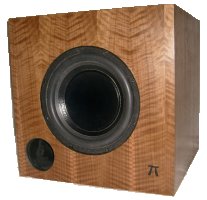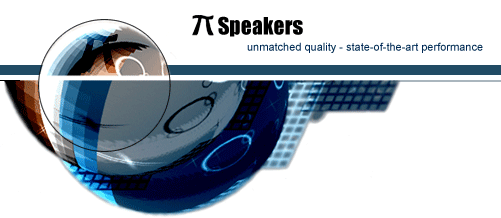three π subwoofer performance data
 Our three "π" subwoofer is a moderately sized high-fidelity subwoofer, suitable for critical listening or home theater. It is the perfect complement for any of our main speakers, or for any others, for that matter.
Our three "π" subwoofer is a moderately sized high-fidelity subwoofer, suitable for critical listening or home theater. It is the perfect complement for any of our main speakers, or for any others, for that matter.
While a single subwoofer can be used, it is much better to use two to four subwoofers. A pair of subs, flanking the mains, will not only provide deep bass extension but also smooth lower midrange, believe it or not. The way to do this is to set the subs a few feet below, beside and behind the mains. Flanking subs are run to relatively high frequency, around 90Hz to 120Hz, second-order. The mains aren't high-passed, but instead overlap with the flanking subs. This way, self-interference from nearest boundaries is mitigated. Flanking subs greatly improve response smoothness in upper half of the room’s modal region, up to 150Hz to 200Hz.
To smooth the lower frequency room modes, add another pair of woofers further away from the mains, using the LFE subwoofer channel to drive them. The distributed subs serve to smooth the lower half of the room's modal region, below 100Hz. The low-pass frequency is generally 60Hz to 80Hz, which prevents any localization problems.
| 






